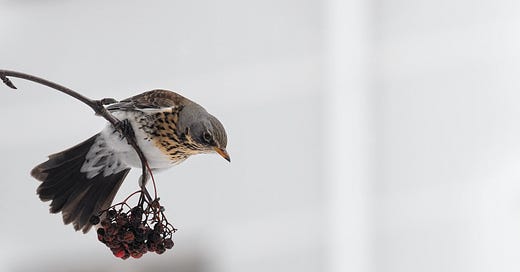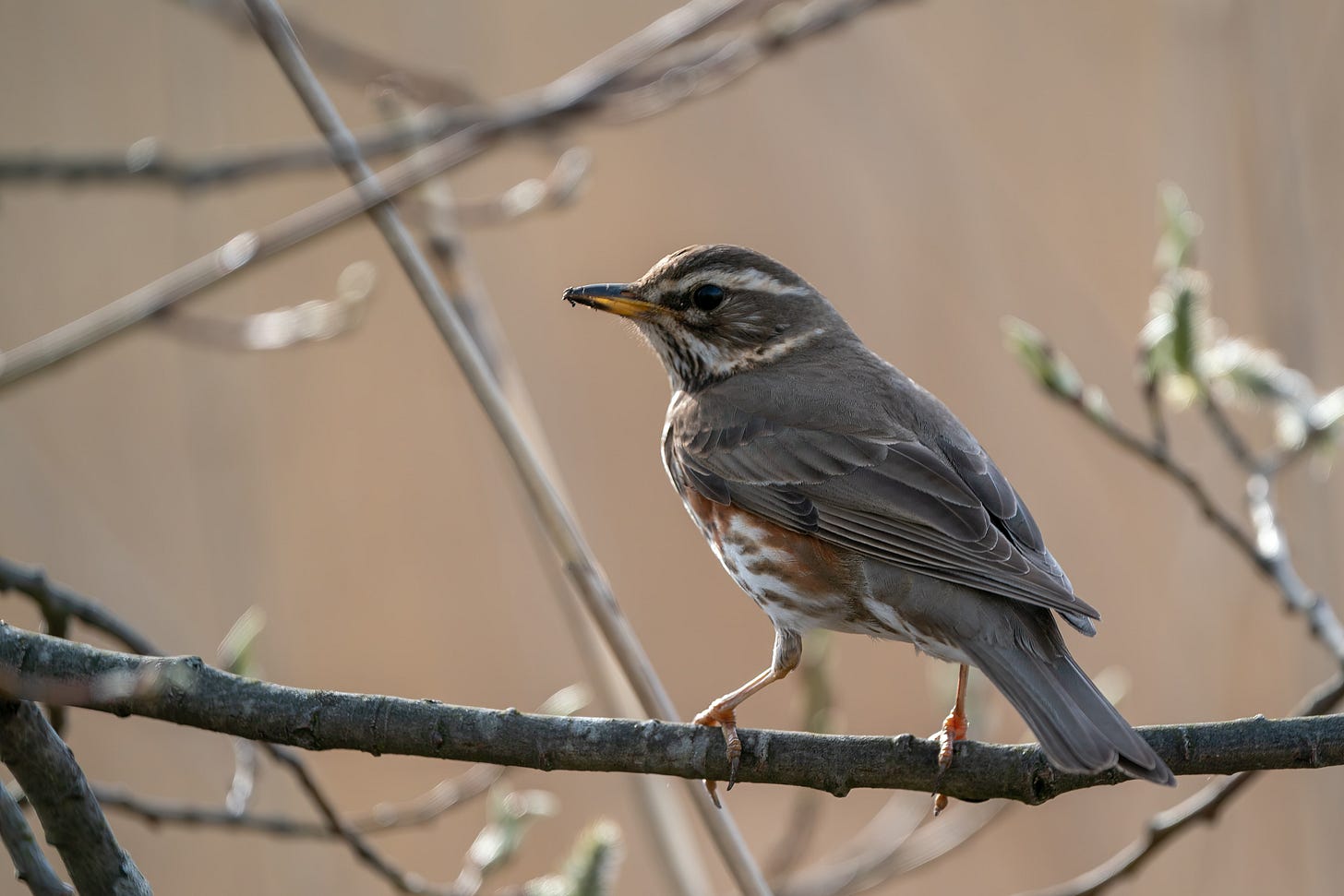The call of the fieldfare is a kind of busy, mirthless chuckle, fitting to the colder months in which we may hear it.
Fieldfares arrive from Scandinavia, Russia and places between, to pick over our fields, orchards and hedgerows between October and April.
Together with their smaller redwing cousins, fieldfares are known to us in Britain as ‘winter thrushes’, although many North European song thrushes and blackbirds migrate to our shores for the colder months too.
These seasonal visitors tend to be more wary and easily spooked than our year-round neighbourhood birds. Encountered on a walk, they will often melt away over the next hedge before you’ve had the chance to get a proper look.
This makes the calls especially helpful. Fieldfares are noisy, especially in flight. Most can’t help but exclaim ‘chack-chack-chack’ as they go, with a few shrill squeaks thrown in.
Lay eyes on one and you quickly see that it's much more strongly marked than our other thrushes.
Females and males are much alike, with a grey head, white belly and dark tail. That tail is long and is sometimes cocked like a blackbird’s.
The broad patch of grey on the rump extends right up the back, forming a long letterbox shape that can be noticeable on a bird flying away from you.
And, as typical thrushes, they might just as easily be down low as high up.
While they might be mere silhouettes in the crown of a high tree, fieldfares also spend a lot of time feeding on the ground. They can gather in extensive flocks, hundreds strong, spreading out across parkland, arable fields and pastures.
Here they often hunt alongside redwings, both operating with the distinctive thrushy action - running a few paces forward, pausing to eye their surroundings, and perhaps pluck something from the turf - and then running on.
There are worse ways to spend a while on a winter’s afternoon - picking through a continually shifting assortment of thrushes as the birds themselves pick their way through the fields.
Goes well with….
Read about and listen to the sounds of the redwing.
Want to get deeper into the sounds of birds? The British Birdsong Essentials course runs again from February. Over the course of ten weeks, we explore how to identify the sounds of over 25 British bird species, starting with our residents and introducing the summer visitors as they reappear over the spring. The course includes bite-sized audio lessons, evening practice sessions, a live dawn chorus call, plus quizzes, a WhatsApp group and ID support from me throughout.
“I would thoroughly recommend Birdsong Essentials. The sessions were informal and fun and Charlie has some great tips to help the songs ‘stick’ in your mind - who could forget a goldcrest riding along on a tiny, squeaky bicycle?”
~ Lindsay Lycett, 2022 course participant
Do you enjoy Shriek of the Week ? Would you like to receive a narrated version each time, and an invitation to join a live bird-listening call every month? You can subscribe from £5 a month, or £25 a year.
You can also support by spreading the word. If you know someone who’d like a little more birdsong in their life, please send them a link or forward them the email.
We go slow till 2023
Shriek of the Week is just once a month from July to December. Weekly posts resume in the New Year.
Media credits:
Fieldfare image by Lukasz Rawa on Unsplash
Redwing image by Marko Hankkila on Unsplash
Fieldfare recording in the narrated version of this Shriek by Simon Elliott via xeno-canto.org. Reproduced by kind permission.





